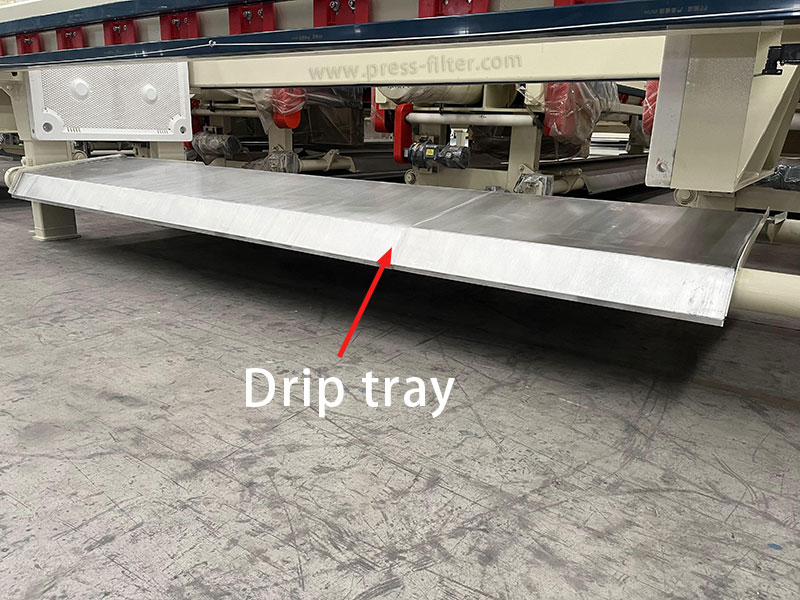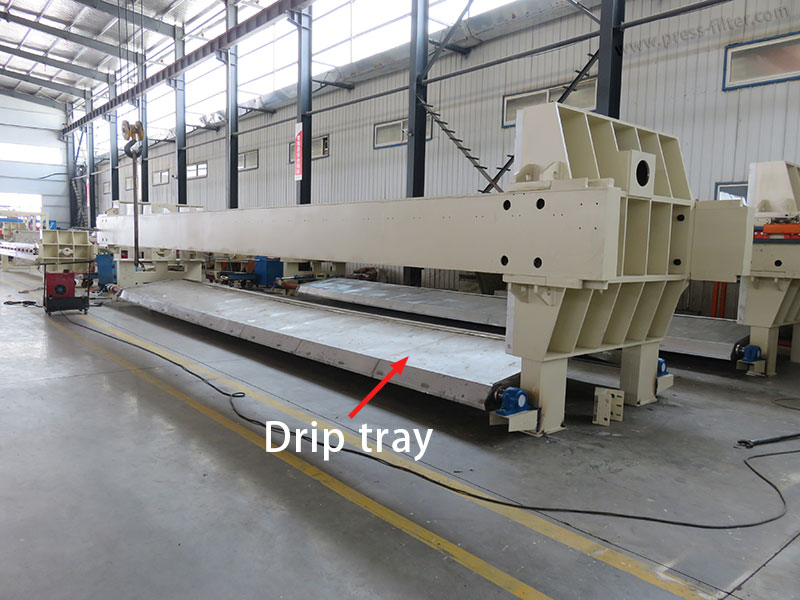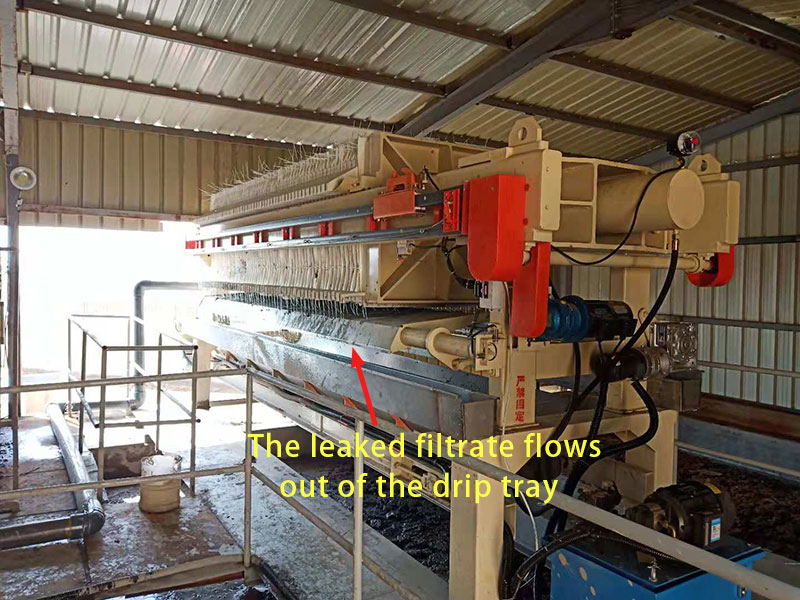Why Does Filter Press Use Drip Trays?
The filter press drip tray is an important
nt part of the filter press. It is mainly used to collect the filtrate leaked from the gap between the filter plates during the filter press process to reduce workplace pollution and improve the cleanliness of the working environment. The filter press drip tray is usually located at the bottom of the filter press. Depending on the design of the filter press, it can be fixed or removable.

Why You Need a Drip Tray?
During the filtration process, there may be tiny gaps between the filter plates. Especially in the initial stage, when the filter cloth has not been completely closed by the filter cake, the filtrate may leak from these gaps. The function of the drip tray is to collect this part of the leaked filtrate to prevent it from dripping directly to the ground, causing environmental pollution and slipping accidents, or to prevent the filtrate from dripping onto the dry filter cake and causing the filter cake to re-wet. The design of the drip tray And the installation position allows the collected filtrate to be directed into a designated container or drainage system, thereby facilitating treatment and recycling.

How Does the Drip Tray Work?
When the filter press starts filtering, the drip tray is closed. When the filtrate leaks out and falls into the drip tray, the filtrate will be guided to the outlet on the edge of the tray through the shape and tilt design of the drip tray. This outlet is connected to a drainage system, either directly to a sewage treatment system or to collect the filtrate for further treatment and recycling. When the filter press completes filtration, the drip tray opens to release the filter cake into the hopper below.
Benefits of Using a Drip Tray
- By collecting the filtrate, drip trays help reduce possible environmental contamination during the filter press process. This is especially important for filtrate containing harmful chemicals. In addition, the collected filtrate can be processed and recycled, further reducing resource waste and environmental impact.
- Reducing downtime for cleaning leaked filtrate allows the filter press to run longer, thereby improving production efficiency. It also reduces labor costs.
- Keeping equipment and the workplace clean helps reduce wear and corrosion on equipment, extends equipment life, and reduces long-term maintenance and replacement costs. In addition, slip and fall accidents caused by filtrate leakage are avoided, and potential compensation costs are reduced.
- Allows the use of high-pressure nozzles to clean the filter press, collect wash water, and drain the cleaning fluid

Finally, the design and material selection of the filter press drip tray are critical to ensuring the effective operation of the system and maintaining a clean working environment. They need to have sufficient strength and corrosion resistance to adapt to different types of filtrate and working environments. In addition, for those applications that handle high-value or hazardous liquids, the drip tray design also needs to account for the recovery and reuse of the filtrate to reduce waste and environmental impact. In short, using a filter press with a drip tray can greatly improve efficiency.

